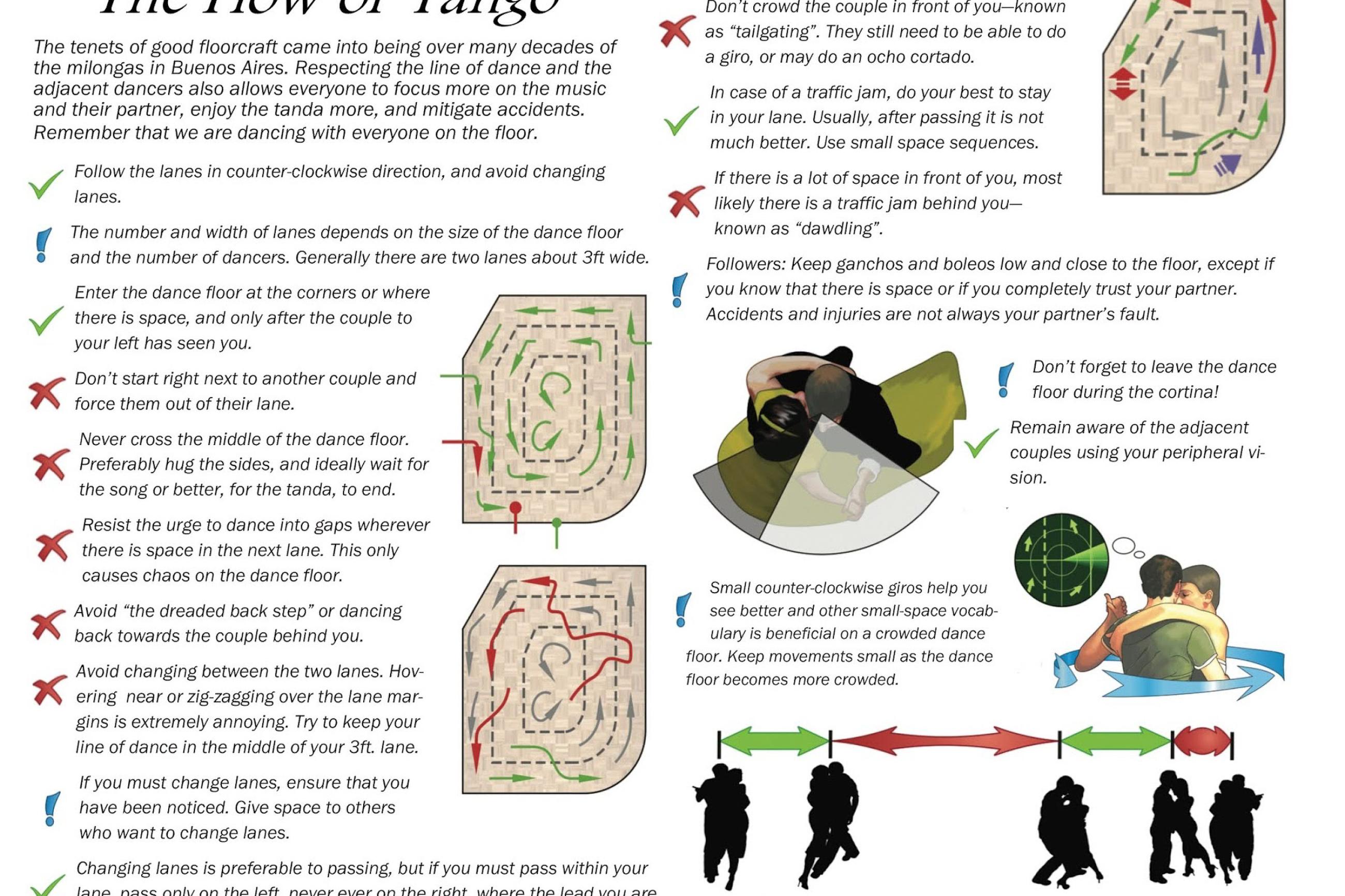
My method for teaching Argentine Tango uses building blocks of small elements, that match with the music. You build up a collection of elements that are easily mixed and matched to build up your dance skills. You arrived in tango with balance and the ability to walk, so let's use your normal walk is the foundation of your learning. In this way, you can feel comfortable with tango from Day One. I feel that shorter, simpler elements make it easier for beginners to get up dancing sooner.
Secondly, I teach social tango, which doesn't use the flashy moves typical of the more athletic show tango. I teach Argentine Tango "the way it is danced in the nightclubs of Buenos Aires": musical, connected, close, romantic.
Thirdly, music and dancing to the music are emphasized in the curriculum from the first day, and in all my classes.
Beginners not only learn fundamental movements of tango, such as walking, musicality, connection, and navigation, but also cultural traditions like the codes of the social dance floor as well as the history and culture of Argentine Tango.
The Romance of Argentine Tango
The Romance of Argentine Tango. At its best Argentine Tango is a trance, danced so closely that you feel your partner's heart beat and share the rhythm of their breathing. Tango looks complex, but it's easier to get if you learn the dance as a combination of short, simple patterns, similar to swing or salsa. Confidence comes from competence.
Structured Learning
Classes are designed to have you up and dancing social-style Argentine Tango as quickly as possible. I am well-known as a teacher who makes tango easier to master by learning to mix and match short sequences of steps. My curriculum starts with fundamentals, emphasizing improvisation, rhythm, music, heart & soul, and always the connection between the leader and follower.
The Intriguing Challenge of Tango
While my goal is to get you up and dancing as soon as possible, Argentine Tango has (at least) three challenges.
(1) Tango has complex possibilities that take time to perfect. This means you need to dedicate consistent effort in order to get good. It also means that tango provides you with a lifetime of fun and challenge.
(2) Improvisation can be accomplished in two ways: by mixing and matching short sequences, or changing your mind at every moment. The first can come with a little practice; the second one, aka intuitive dancing, is achieved with time on the dance floor.
(3) As they say, it takes TWO to Tango. Tango is a duet in which the couple moves together, sharing and adapting to the music, to each other, and to other dancers on the floor. Achieving intuitive and effortless movement with a partner can be a transcendent experience.
I offer a clear and step-by-step approach to help both men and women succeed with the complexities of tango.
For the men: Competence and Confidence
The challenge for men in of tango is to lead the lady around the dance floor, while dealing with navigation and floor-craft. Musicality starts with hearing the beat (easy enough), to which we and moving to the musical phrases. Competence means achieving mastery with the intricate steps of tango. Confidence comes from learning to move effortlessly with the music. Like any athletic activity, you gain skill through lots of repetition.
For the Women: Balance, Grace and beauty
Knowing and trusting yourself is the foundation of the follower's role in tango because you need to be ready to respond instantly and intuitively to the leader's movements. (1) You start by reaching into the earth for balance. (2) Carry yourself via your own internal core support. (3) Connect to the leader and allow his movements to flow through you. This is participation not submission. Your dance is then expressed in balance and beauty (while walking backwards in high heels!). Training for graceful movements makes it easy to follow different leaders and different styles of tango. The follower's role is an internal, meditative one.
I like to say that the woman has "only" four fundamental things to do: (1) Step on the beat (i.e. "walk"), (2) Stay in front of the leader, (3) Pass your feet close together, and (4) Have beautiful legs. (1) is surprisingly deep. (4) is the big challenge. I have a huge collection of techniques and exercises for teaching graceful and beautiful movement that enable you to adapt and respond no matter what style your leader is presenting.